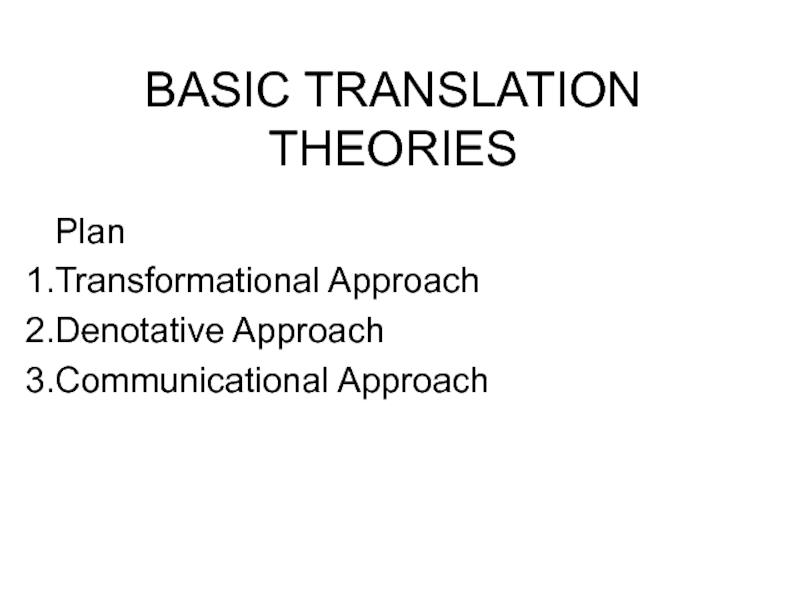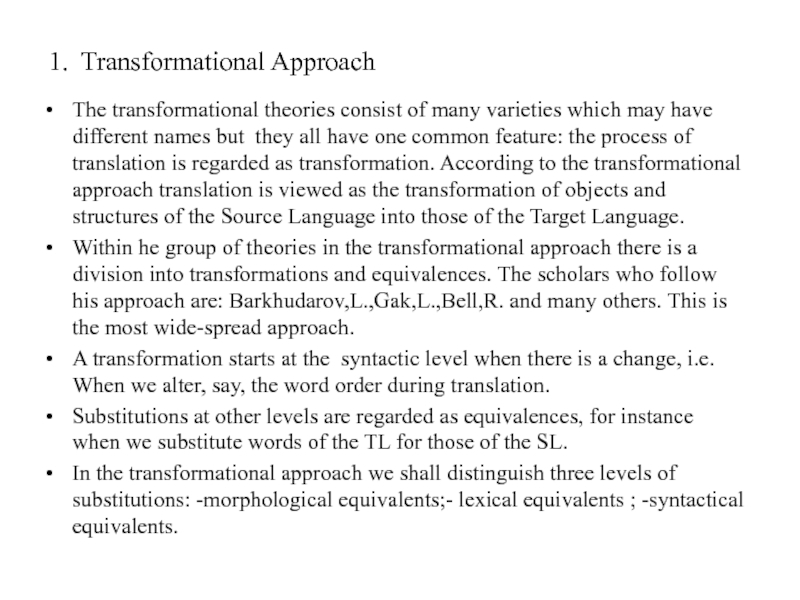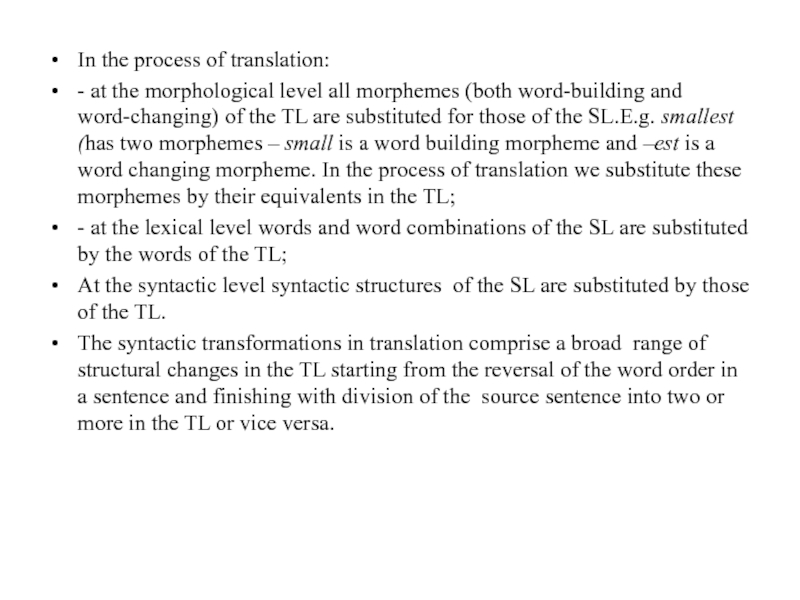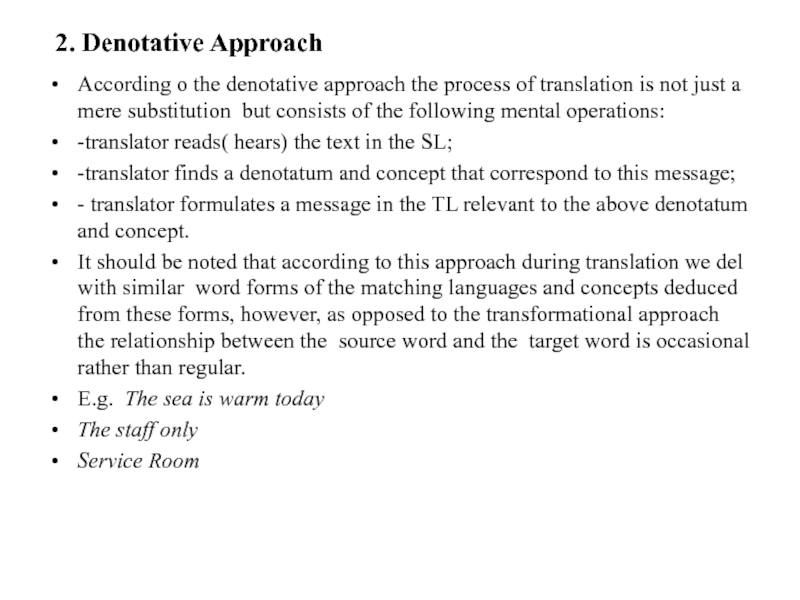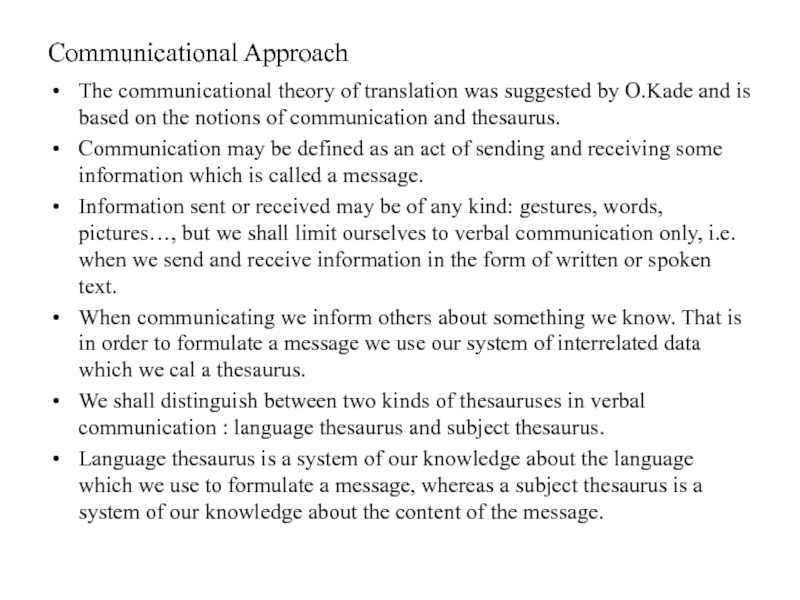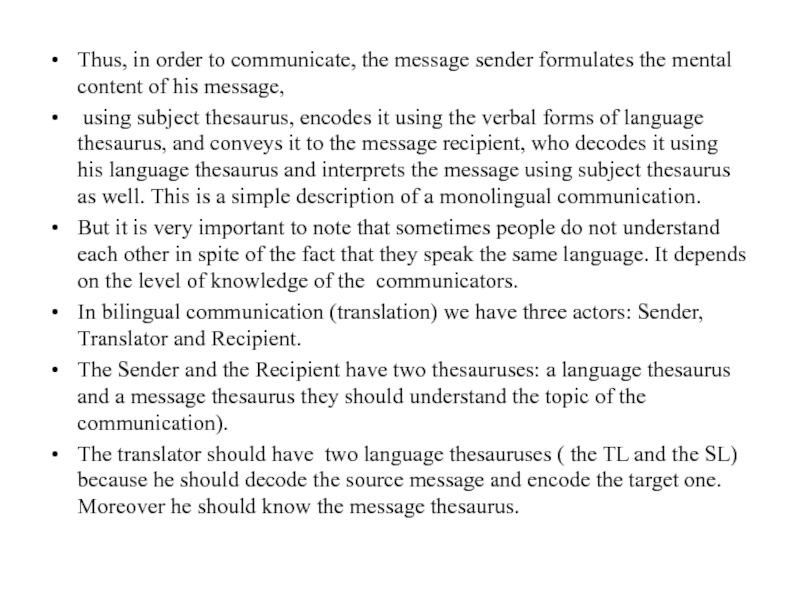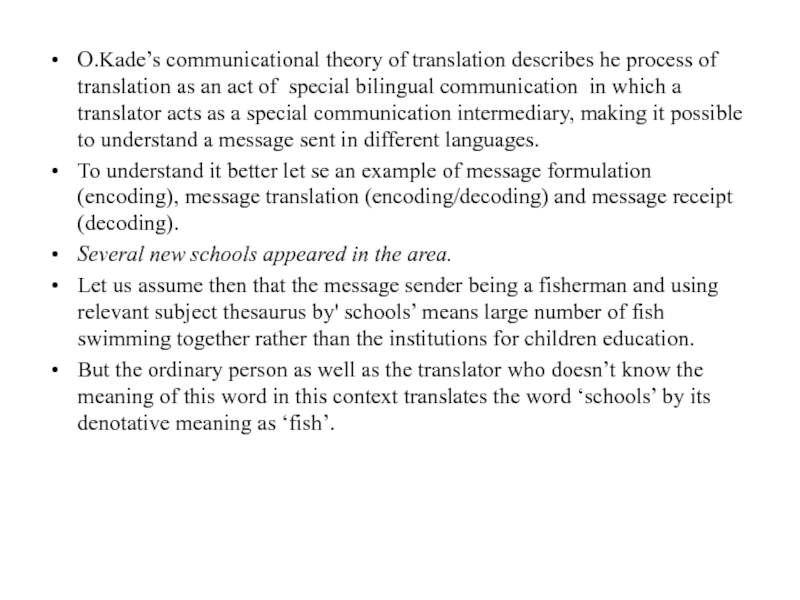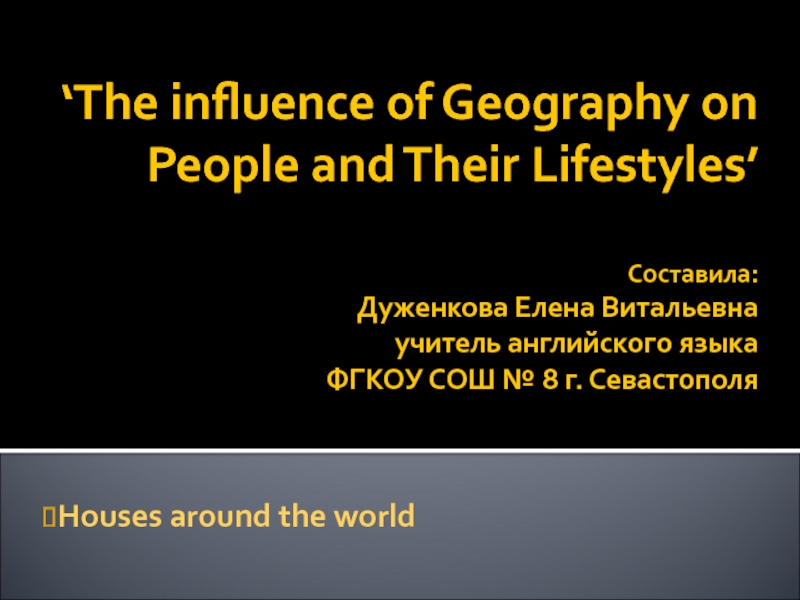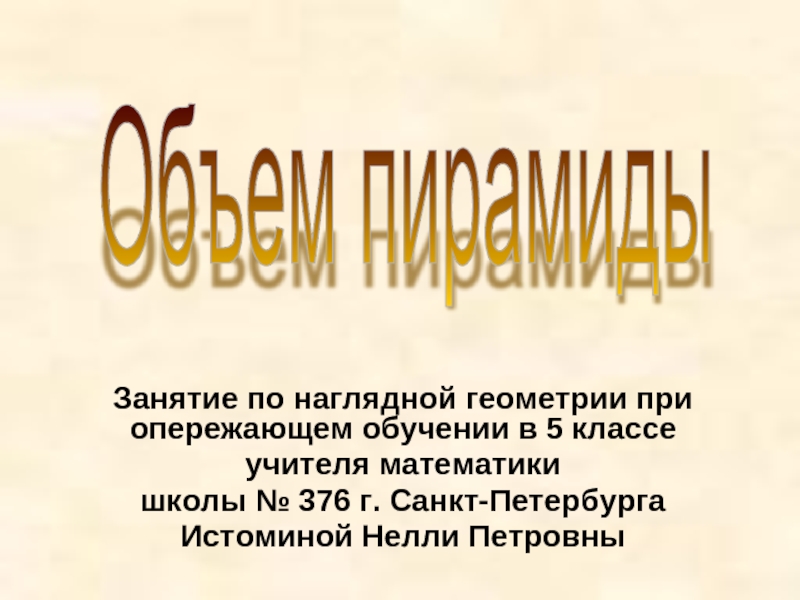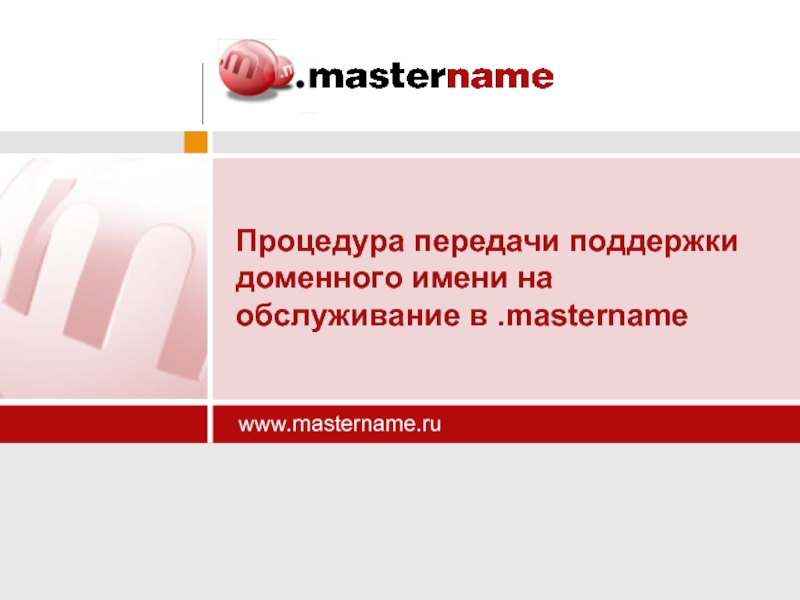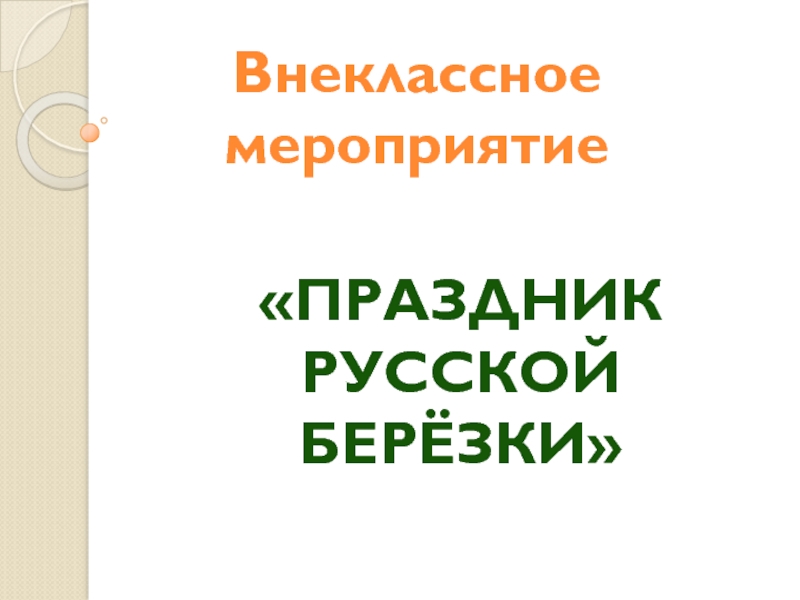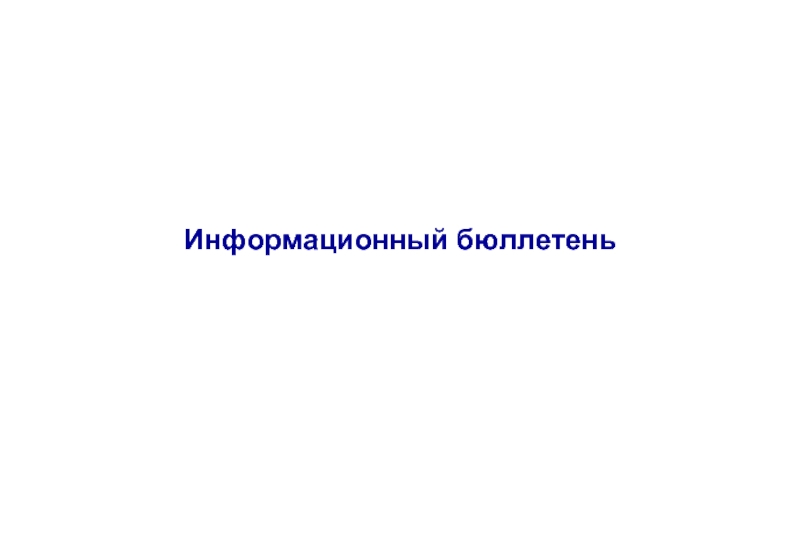- Главная
- Разное
- Дизайн
- Бизнес и предпринимательство
- Аналитика
- Образование
- Развлечения
- Красота и здоровье
- Финансы
- Государство
- Путешествия
- Спорт
- Недвижимость
- Армия
- Графика
- Культурология
- Еда и кулинария
- Лингвистика
- Английский язык
- Астрономия
- Алгебра
- Биология
- География
- Детские презентации
- Информатика
- История
- Литература
- Маркетинг
- Математика
- Медицина
- Менеджмент
- Музыка
- МХК
- Немецкий язык
- ОБЖ
- Обществознание
- Окружающий мир
- Педагогика
- Русский язык
- Технология
- Физика
- Философия
- Химия
- Шаблоны, картинки для презентаций
- Экология
- Экономика
- Юриспруденция
Basic translation theories презентация
Содержание
- 1. Basic translation theories
- 2. 1. Transformational Approach The transformational theories consist
- 3. In the process of translation: -
- 4. 2. Denotative Approach According o the denotative
- 5. Communicational Approach The communicational theory of translation
- 6. Thus, in order to communicate, the
- 7. O.Kade’s communicational theory of translation describes
Слайд 1BASIC TRANSLATION THEORIES
Plan
Transformational Approach
Denotative Approach
Communicational Approach
Слайд 21. Transformational Approach
The transformational theories consist of many varieties which may
have different names but they all have one common feature: the process of translation is regarded as transformation. According to the transformational approach translation is viewed as the transformation of objects and structures of the Source Language into those of the Target Language.
Within he group of theories in the transformational approach there is a division into transformations and equivalences. The scholars who follow his approach are: Barkhudarov,L.,Gak,L.,Bell,R. and many others. This is the most wide-spread approach.
A transformation starts at the syntactic level when there is a change, i.e. When we alter, say, the word order during translation.
Substitutions at other levels are regarded as equivalences, for instance when we substitute words of the TL for those of the SL.
In the transformational approach we shall distinguish three levels of substitutions: -morphological equivalents;- lexical equivalents ; -syntactical equivalents.
Within he group of theories in the transformational approach there is a division into transformations and equivalences. The scholars who follow his approach are: Barkhudarov,L.,Gak,L.,Bell,R. and many others. This is the most wide-spread approach.
A transformation starts at the syntactic level when there is a change, i.e. When we alter, say, the word order during translation.
Substitutions at other levels are regarded as equivalences, for instance when we substitute words of the TL for those of the SL.
In the transformational approach we shall distinguish three levels of substitutions: -morphological equivalents;- lexical equivalents ; -syntactical equivalents.
Слайд 3
In the process of translation:
- at the morphological level all morphemes
(both word-building and word-changing) of the TL are substituted for those of the SL.E.g. smallest (has two morphemes – small is a word building morpheme and –est is a word changing morpheme. In the process of translation we substitute these morphemes by their equivalents in the TL;
- at the lexical level words and word combinations of the SL are substituted by the words of the TL;
At the syntactic level syntactic structures of the SL are substituted by those of the TL.
The syntactic transformations in translation comprise a broad range of structural changes in the TL starting from the reversal of the word order in a sentence and finishing with division of the source sentence into two or more in the TL or vice versa.
- at the lexical level words and word combinations of the SL are substituted by the words of the TL;
At the syntactic level syntactic structures of the SL are substituted by those of the TL.
The syntactic transformations in translation comprise a broad range of structural changes in the TL starting from the reversal of the word order in a sentence and finishing with division of the source sentence into two or more in the TL or vice versa.
Слайд 42. Denotative Approach
According o the denotative approach the process of translation
is not just a mere substitution but consists of the following mental operations:
-translator reads( hears) the text in the SL;
-translator finds a denotatum and concept that correspond to this message;
- translator formulates a message in the TL relevant to the above denotatum and concept.
It should be noted that according to this approach during translation we del with similar word forms of the matching languages and concepts deduced from these forms, however, as opposed to the transformational approach the relationship between the source word and the target word is occasional rather than regular.
E.g. The sea is warm today
The staff only
Service Room
-translator reads( hears) the text in the SL;
-translator finds a denotatum and concept that correspond to this message;
- translator formulates a message in the TL relevant to the above denotatum and concept.
It should be noted that according to this approach during translation we del with similar word forms of the matching languages and concepts deduced from these forms, however, as opposed to the transformational approach the relationship between the source word and the target word is occasional rather than regular.
E.g. The sea is warm today
The staff only
Service Room
Слайд 5Communicational Approach
The communicational theory of translation was suggested by O.Kade and
is based on the notions of communication and thesaurus.
Communication may be defined as an act of sending and receiving some information which is called a message.
Information sent or received may be of any kind: gestures, words, pictures…, but we shall limit ourselves to verbal communication only, i.e. when we send and receive information in the form of written or spoken text.
When communicating we inform others about something we know. That is in order to formulate a message we use our system of interrelated data which we cal a thesaurus.
We shall distinguish between two kinds of thesauruses in verbal communication : language thesaurus and subject thesaurus.
Language thesaurus is a system of our knowledge about the language which we use to formulate a message, whereas a subject thesaurus is a system of our knowledge about the content of the message.
Communication may be defined as an act of sending and receiving some information which is called a message.
Information sent or received may be of any kind: gestures, words, pictures…, but we shall limit ourselves to verbal communication only, i.e. when we send and receive information in the form of written or spoken text.
When communicating we inform others about something we know. That is in order to formulate a message we use our system of interrelated data which we cal a thesaurus.
We shall distinguish between two kinds of thesauruses in verbal communication : language thesaurus and subject thesaurus.
Language thesaurus is a system of our knowledge about the language which we use to formulate a message, whereas a subject thesaurus is a system of our knowledge about the content of the message.
Слайд 6
Thus, in order to communicate, the message sender formulates the mental
content of his message,
using subject thesaurus, encodes it using the verbal forms of language thesaurus, and conveys it to the message recipient, who decodes it using his language thesaurus and interprets the message using subject thesaurus as well. This is a simple description of a monolingual communication.
But it is very important to note that sometimes people do not understand each other in spite of the fact that they speak the same language. It depends on the level of knowledge of the communicators.
In bilingual communication (translation) we have three actors: Sender, Translator and Recipient.
The Sender and the Recipient have two thesauruses: a language thesaurus and a message thesaurus they should understand the topic of the communication).
The translator should have two language thesauruses ( the TL and the SL) because he should decode the source message and encode the target one. Moreover he should know the message thesaurus.
using subject thesaurus, encodes it using the verbal forms of language thesaurus, and conveys it to the message recipient, who decodes it using his language thesaurus and interprets the message using subject thesaurus as well. This is a simple description of a monolingual communication.
But it is very important to note that sometimes people do not understand each other in spite of the fact that they speak the same language. It depends on the level of knowledge of the communicators.
In bilingual communication (translation) we have three actors: Sender, Translator and Recipient.
The Sender and the Recipient have two thesauruses: a language thesaurus and a message thesaurus they should understand the topic of the communication).
The translator should have two language thesauruses ( the TL and the SL) because he should decode the source message and encode the target one. Moreover he should know the message thesaurus.
Слайд 7
O.Kade’s communicational theory of translation describes he process of translation as
an act of special bilingual communication in which a translator acts as a special communication intermediary, making it possible to understand a message sent in different languages.
To understand it better let se an example of message formulation (encoding), message translation (encoding/decoding) and message receipt (decoding).
Several new schools appeared in the area.
Let us assume then that the message sender being a fisherman and using relevant subject thesaurus by' schools’ means large number of fish swimming together rather than the institutions for children education.
But the ordinary person as well as the translator who doesn’t know the meaning of this word in this context translates the word ‘schools’ by its denotative meaning as ‘fish’.
To understand it better let se an example of message formulation (encoding), message translation (encoding/decoding) and message receipt (decoding).
Several new schools appeared in the area.
Let us assume then that the message sender being a fisherman and using relevant subject thesaurus by' schools’ means large number of fish swimming together rather than the institutions for children education.
But the ordinary person as well as the translator who doesn’t know the meaning of this word in this context translates the word ‘schools’ by its denotative meaning as ‘fish’.
